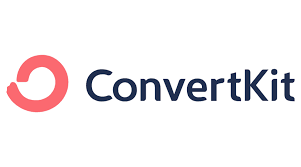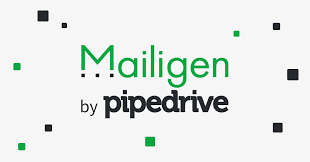Hello and welcome to our in-depth exploration! Today, we’re diving into a crucial question for digital marketers and entrepreneurs alike: In the crowded field of email marketing tools, which reigns supreme in 2024 – ConvertKit or Mailigen? Both are top contenders, but they cater to different needs and preferences. Let’s unpack their features, one aspect at a time, to see which one might be the best fit for your email marketing strategy.
| ConvertKit | Mailigen |
|---|---|
 |  |
| G2 Score – 4.4 out of 5 stars | G2 Score – 4.3 out of 5 stars |
| TrustRadius Score – 8.8 out of 10 | TrustRadius Score – 7.1 out of 10 |
User Interface and Ease of Use
In the digital age, a tool is only as good as its usability. Let’s start by comparing ConvertKit and Mailigen on how user-friendly and intuitive they are.
ConvertKit: Simplified and Streamlined
ConvertKit has always been praised for its straightforward, no-fuss interface, and in 2024, it’s no different. From the moment you log in, ConvertKit welcomes you with a clean, intuitive dashboard. This simplicity is key, especially for those who are new to email marketing or juggling multiple tasks. It’s about getting what you need without the clutter.
Creating a campaign in ConvertKit feels almost effortless. The platform guides you through each step, ensuring you’re never lost or overwhelmed. This streamlined process is a time-saver, allowing you to focus more on content and less on figuring out the mechanics.
ConvertKit has mastered the art of making complex tasks simple. Setting up automated email sequences is surprisingly straightforward, with a user-friendly interface that handles even the most intricate workflows with ease.
Mailigen: Flexibility Meets Functionality
Mailigen, on the other hand, takes a slightly different approach, balancing flexibility with functionality. Mailigen’s interface packs more features, which can be a double-edged sword. On one hand, you have a multitude of tools at your disposal; on the other, it can be a bit overwhelming for beginners. However, once you get the hang of it, the possibilities are extensive.
Mailigen shines in its email design capabilities. With a robust set of tools, users can create highly customized emails. This is great for those who have a specific vision for their email campaigns or those who enjoy having creative control.
One of the standout features of Mailigen is its advanced segmentation capabilities. This allows for precise targeting, ensuring that your emails reach the most relevant audience. It might take a bit of a learning curve to master, but the results are worth it.
The Verdict
When it comes to user interface and ease of use, both ConvertKit and Mailigen have their strengths. ConvertKit is ideal for those who value simplicity and a straightforward approach to email marketing. It’s perfect for saving time and reducing complexity. Mailigen, with its advanced features and customization options, caters to those who prefer having more control over their campaigns and don’t mind a steeper learning curve.
Email Automation and Personalization
The power of email marketing largely hinges on effective automation and personalization. Both ConvertKit and Mailigen offer these features, but they approach them differently. Let’s see how they stack up.
ConvertKit: Mastering the Art of Personalized Automation
ConvertKit is renowned for its sophisticated yet user-friendly automation features. ConvertKit’s strength lies in its ability to create complex email automation workflows that feel simple. You can easily set up triggers and actions based on subscriber behavior, ensuring each subscriber receives a personalized journey tailored to their interactions.
The platform excels in segmenting subscribers based on various criteria, such as engagement level, interests, and past purchases. This granular level of segmentation allows for highly targeted and relevant email campaigns.
ConvertKit enables you to include dynamic content in your emails, which changes based on the subscriber’s profile or behavior. This feature significantly boosts the relevance and engagement of your emails.
Mailigen: Offering Flexibility in Automation
Mailigen approaches email automation with a focus on flexibility and customization. Mailigen offers a wide range of automation options, including behavioral triggers and time-based emails. While the setup can be more complex than ConvertKit, it provides more control over the automation process.
Mailigen’s list management capabilities are robust, allowing you to segment your audience with precision. This feature is key for tailoring your emails to different segments of your audience effectively.
Mailigen allows for creative personalization of emails. You can use subscriber data to customize every aspect of your email, from the subject line to the content, making each email feel unique to the recipient.
The Verdict
In the realm of email automation and personalization, both ConvertKit and Mailigen shine, but in different ways. ConvertKit is ideal for those who need powerful yet straightforward automation capabilities, with a focus on personalized subscriber journeys. Mailigen, on the other hand, is suited for users who want more control over their automation and personalization processes and don’t mind investing extra time to set up more complex campaigns.
Analytics and Reporting: Measuring Success
Analytics and reporting are vital in understanding the effectiveness of your email marketing campaigns. Let’s compare how ConvertKit and Mailigen provide insights and data to measure success.
ConvertKit: In-Depth Insights for Strategic Decisions
ConvertKit offers a comprehensive analytics suite designed for data-driven marketers. ConvertKit’s analytics dashboard provides detailed insights into your campaigns’ performance. You can track open rates, click-through rates, conversion rates, and more, offering a clear view of how your audience engages with your emails.
A standout feature is the ability to track individual subscriber behaviors. This level of detail helps you understand what content resonates with your audience, allowing for more targeted and effective future campaigns.
ConvertKit facilitates A/B testing and provides clear, actionable data on the results. This feature is crucial for refining your emails to ensure they have the maximum impact.
Mailigen: User-Friendly Reporting for Effective Analysis
Mailigen also provides robust analytics and reporting tools, with a focus on accessibility and usability. Mailigen’s analytics are presented in a user-friendly interface, making it easy to understand your campaign’s performance at a glance. This approach is particularly beneficial for those new to email marketing analytics.
The platform offers real-time data, allowing you to see how your campaigns are performing as they unfold. This immediate feedback is valuable for making quick adjustments to improve engagement.
Mailigen provides a broad overview of campaign performance, including subscriber growth, geographic data, and device usage. This comprehensive approach helps in crafting more informed, data-driven marketing strategies.
The Verdict
Both ConvertKit and Mailigen offer strong analytics and reporting capabilities, but they cater to different user preferences. ConvertKit’s in-depth insights and individual subscriber tracking are ideal for marketers who base their strategies on meticulous data analysis. Mailigen’s user-friendly and comprehensive reporting, on the other hand, is great for those who prefer an intuitive and straightforward approach to analytics.
Deliverability: Ensuring Your Emails Reach Their Destination
Email deliverability is a key factor in the success of any email marketing campaign. It’s essential that your chosen platform not only sends emails but ensures they land in the recipient’s inbox. Let’s see how ConvertKit and Mailigen handle this crucial aspect.
ConvertKit: Prioritizing High Deliverability Rates
ConvertKit places a strong emphasis on email deliverability, implementing several strategies to ensure high success rates. ConvertKit maintains a strong sender reputation, which is crucial for high deliverability. They use advanced algorithms and monitoring tools to prevent spam and ensure that their users’ emails are trusted by email providers.
The platform supports standard email authentication protocols, such as SPF, DKIM, and DMARC. These protocols verify that emails are legitimately coming from your domain, reducing the likelihood of being marked as spam.
ConvertKit conducts regular audits to assess and improve their deliverability rates. They stay abreast of changes in email policies and adjust their strategies accordingly, ensuring that your emails consistently reach their intended inboxes.
Mailigen: Focused on Reliable Email Delivery
Mailigen also recognizes the importance of deliverability and takes measures to optimize it. Mailigen ensures compliance with email marketing best practices and regulations. This adherence to standards is key in maintaining a good sender reputation and avoiding spam filters.
The platform provides tools to maintain clean email lists, such as easy unsubscribe options and management of inactive subscribers. Healthy email lists are a critical component in achieving high deliverability.
Mailigen offers deliverability testing tools that allow you to check how your emails perform under various conditions. This feature helps identify and rectify issues that could affect deliverability before sending out a large campaign.
The Verdict
In terms of deliverability, both ConvertKit and Mailigen demonstrate a strong commitment to ensuring that your emails reach their destinations. ConvertKit excels with its comprehensive approach, including reputation management and authentication protocols. Mailigen’s focus on compliance, list hygiene, and testing tools make it a reliable choice for consistent email delivery.
Integration Capabilities: Connecting Your Marketing Ecosystem
In the digital marketing landscape, the ability to integrate your email marketing tool with other software and services is essential. Let’s compare ConvertKit and Mailigen on their integration capabilities to see how they help streamline your marketing efforts.
ConvertKit: Expanding Your Digital Reach
ConvertKit offers a wide range of integration options, catering to a diverse digital marketing ecosystem. ConvertKit integrates seamlessly with numerous third-party platforms, including e-commerce solutions, CRM systems, webinar tools, and more. This extensive range allows you to connect and synchronize your email marketing efforts with various aspects of your business seamlessly.
For those with unique integration needs, ConvertKit provides API access. This allows for the development of custom integrations, ensuring a perfect fit into your specific tech stack.
ConvertKit’s compatibility with Zapier further extends its integration capabilities. Through Zapier, you can connect ConvertKit with thousands of apps, even if a direct integration isn’t natively available.
Mailigen: Streamlined Integration for Efficiency
Mailigen offers a focused set of integrations, emphasizing efficiency and essential functionality. Mailigen integrates with key platforms that are essential for most email marketing strategies. This includes popular CRM software, e-commerce platforms, and social media tools, covering the core needs of most campaigns.
The process of setting up integrations in Mailigen is designed to be straightforward and user-friendly. This approach is particularly beneficial for users who may not have extensive technical knowledge but need to connect their email marketing tool with other business applications.
Mailigen also offers API access for custom integrations. This feature allows more tech-savvy users to tailor Mailigen to their specific requirements, creating a seamless workflow across different tools.
The Verdict
When it comes to integration capabilities, both ConvertKit and Mailigen offer robust options, but with different focal points. ConvertKit is ideal for businesses that require a wide array of integration options, including custom solutions through API access. Its compatibility with Zapier adds another layer of versatility. Mailigen, with its focused and straightforward integration options, is well-suited for users who need essential, easy-to-set-up connectivity without the complexity of an extensive integration network.

Related: Check out our free SEO suite

Pricing and Value: Comparing Costs and Benefits
A critical aspect of choosing an email marketing tool is understanding its pricing structure and the value it offers for that price. Let’s break down the pricing models of ConvertKit and Mailigen to see which platform might offer the best value for your needs.
| ConvertKit | Free Plan: Offers basic features for up to 1,000 subscribers, including email broadcasts, landing pages, and forms. Creator Plan: Starting at $29/month for up to 1,000 subscribers, including automation and third-party integrations. The price increases with more subscribers. Creator Pro Plan: Starting at $59/month for up to 1,000 subscribers, adding advanced features like newsletter referral system, subscriber scoring, and advanced reporting. |
| Mailigen | Pricing Structure: Based on the number of subscribers. Basic Plans: Up to 500 subscribers: Starts at approximately $10/month. Up to 2,500 subscribers: Starts at approximately $25/month. Up to 5,000 subscribers: Starts at approximately $40/month. Higher Volume Plans: Up to 10,000 subscribers: Pricing available upon request. Up to 25,000 subscribers and more: Custom pricing. |
ConvertKit: Transparent Pricing for Diverse Needs
ConvertKit’s pricing is designed to be straightforward and scalable, catering to various user needs. ConvertKit offers several pricing tiers, based on the number of subscribers. This scalable approach means you’re paying in line with the size of your audience, making it cost-effective for both small and large-scale operations.
For those just starting out or with limited needs, ConvertKit provides a free plan. This plan includes essential features, offering a solid starting point without any financial commitment. ConvertKit’s pricing is transparent, with no hidden costs. You get full access to the features within your chosen plan, which aids in predictable budgeting for your email marketing needs.
Mailigen: Flexible Pricing for Various Segments
Mailigen offers a flexible pricing model, designed to cater to a wide range of users, from individual marketers to large enterprises. Mailigen has different pricing tiers, each offering a distinct set of features. This flexibility allows you to choose a plan that fits your specific requirements and budget, without paying for unneeded extras.
Unique to Mailigen is the pay-as-you-go option, ideal for businesses with irregular email sending schedules. This model allows for a more flexible approach to pricing, paying only for what you use.
Mailigen offers special pricing for non-profit organizations, reflecting their commitment to supporting various community initiatives. This consideration can be a key deciding factor for non-profits looking for an affordable email marketing solution.
The Verdict
Both ConvertKit and Mailigen offer competitive pricing, but their structures cater to different types of users. ConvertKit’s transparent, subscriber-based pricing makes it a great choice for businesses that want a straightforward, scalable solution. Mailigen, with its tiered options and pay-as-you-go model, offers more flexibility and is particularly well-suited for users with varying email sending needs or non-profit organizations.
Email Design and Customization: Crafting Your Perfect Message
The design of your email plays a critical role in engaging your audience. Let’s compare how ConvertKit and Mailigen enable you to craft visually appealing and effective emails.
ConvertKit: Simplifying Design While Maximizing Impact
ConvertKit focuses on simplicity and effectiveness in email design. ConvertKit offers a range of customizable templates that are both simple and elegant. These templates are designed to ensure your message stands out without the need for complex design skills.
ConvertKit’s design philosophy emphasizes content over flashy design elements. This approach aligns with their goal of delivering personal and impactful messages, ensuring your content takes center stage. Even though the templates are straightforward, ConvertKit provides ample customization options. You can easily align the design with your brand identity, tweaking colors, fonts, and layouts as needed.
Mailigen: Offering Creative Freedom in Email Design
Mailigen takes a more expansive approach to email design, offering greater creative freedom. Mailigen boasts a diverse range of email templates, catering to different styles and campaigns. Whether you’re looking for something formal, playful, or somewhere in between, you’ll find a template that suits your needs.
For those who want to dive deeper into customization, Mailigen offers advanced design features. You can experiment with various design elements to create a unique email that captures your brand’s essence. Mailigen’s drag-and-drop editor is both powerful and intuitive, making it easy to design emails without any technical know-how. This flexibility is great for marketers who want to put a personal touch on every campaign.
The Verdict
In terms of email design and customization, ConvertKit and Mailigen cater to different preferences. ConvertKit is ideal for users who prioritize content and prefer a clean, minimalist design approach. It’s perfect for those who want to create professional-looking emails quickly and easily. Mailigen, with its wide range of templates and advanced design features, is suited for users who desire more control over their email’s appearance and enjoy experimenting with different design elements.
List Management and Segmentation: Targeting the Right Audience
Effective list management and segmentation are key to successful email marketing, as they allow for targeted and relevant communications. Let’s examine how ConvertKit and Mailigen handle these critical tasks.
ConvertKit: Precision in Audience Segmentation
ConvertKit offers advanced features for managing and segmenting your email lists. The platform provides straightforward tools for managing your subscriber lists. Adding, removing, and organizing subscribers is streamlined, making list maintenance hassle-free.
ConvertKit excels in segmentation. You can segment your lists based on a variety of criteria, such as subscriber behavior, engagement levels, purchase history, and more. This granularity enables highly targeted and personalized email campaigns. ConvertKit uses a tag-based system for organizing subscribers, which offers flexibility in segmentation. You can apply multiple tags to a single subscriber, allowing for nuanced and dynamic audience targeting.
Mailigen: Versatility in List Management
Mailigen offers robust tools for list management and segmentation, focusing on versatility and ease of use. Mailigen provides comprehensive features for managing your email lists. The platform allows for easy import and export of contacts, along with effective tools for cleaning and maintaining your lists.
Mailigen’s segmentation capabilities are both flexible and user-friendly. You can create segments based on a wide array of criteria, ensuring that your emails are sent to the most relevant and responsive audience. Mailigen supports dynamic segmentation, where lists are automatically updated based on subscriber behavior. This feature ensures that your segmentation remains accurate and up-to-date without manual intervention.
The Verdict
Both ConvertKit and Mailigen offer strong capabilities in list management and segmentation, but they shine in different areas. ConvertKit is ideal for those who need detailed, tag-based segmentation to create highly personalized email campaigns. Its advanced segmentation tools are perfect for marketers who want to dive deep into audience targeting. Mailigen, with its comprehensive list management features and dynamic segmentation, is well-suited for users who value versatility and ease of use in managing their email lists.
Conclusion
In conclusion, both ConvertKit and Mailigen present compelling features for email marketing in 2024, each catering to different needs and preferences. ConvertKit stands out for its intuitive interface, advanced automation, detailed segmentation, and a strong focus on content-driven email design. It’s ideal for marketers who prioritize ease of use, personalized communication, and detailed subscriber targeting.
On the other hand, Mailigen offers a versatile platform with robust list management, flexible segmentation, creative freedom in email design, and comprehensive integration capabilities. It appeals to users who seek diverse functionality, creative control in design, and dynamic audience segmentation. Ultimately, the choice between ConvertKit and Mailigen depends on your specific marketing goals, the level of customization you need, and the complexity of your campaigns. Both platforms are equipped to enhance your email marketing strategy effectively in 2024, making them top contenders in the field.
Read Next
- ActiveCampaign vs Sendy: The Best Email Marketing Tool for 2024
- ActiveCampaign vs Mailshake: The Best Email Marketing Tool for 2024
- ActiveCampaign vs Mailify: The Best Email Marketing Tool for 2024
- ActiveCampaign vs Sender: The Best Email Marketing Tool for 2024
- ActiveCampaign vs Elastic Email: The Best Email Marketing Tool for 2024





















Comments are closed.